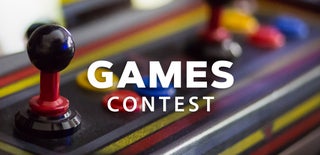Introduction: Player's Handbook Cover Art Made From Wood and Resin
Ever since the Special Edition versions of Dungeon and Dragon's books have been released, I have been really drawn to the artwork. I wanted to create something that would allow for the entire piece to pop in a way that allowed me to use different materials that I like to work with.
I set out to create a set of these cover art renditions out of Baltic Birchwood, Laser Beams, acrylic paint, and Epoxy resin. The Player's Handbook is the last in our series of cover remakes, and let me just say....they are super rad.
Supplies
Below are Amazon Affiliate Links to tools used in this build. Using these links don't cost you any extra, they just help us feed the cats and leave the lights on:
- iPad Pro -https://amzn.to/2VkfhQo
- Apple Pencil- https://amzn.to/3a7UVyh
- Glowforge - https://amzn.to/3a7UVyh
- MDF Back Panel, 11x14 - https://amzn.to/3a7UVyh
- Woodpeckers Plywood - 3mm plywood - box of 8 - https://amzn.to/3a7UVyh
- Acrylic Sheet - https://amzn.to/3a7UVyh
- Artisan Pigments - Mica Powder Ultimate 25 Color Set - https://amzn.to/3a7UVyh
- Pinata Color - Alcohol Ink - https://amzn.to/3a7UVyh
- Promarine Crystal Clear Table Top Epoxy Resin - https://amzn.to/3a7UVyh
- Insta-Cure Gap Filling 2oz Bob Smith Ind. - https://amzn.to/3a7UVyh
- E6000 Glue - https://amzn.to/3a7UVyh
- UV Curing Epoxy Resin Hard - https://amzn.to/3a7UVyh
- UV Lamp - https://amzn.to/3a7UVyh
- Sewing Clips - https://amzn.to/3a7UVyh
- Fine Tip Paint Markers - https://amzn.to/3a7UVyh
- Vallejo Basic USA Colors Paint Set, 17ml - https://amzn.to/3a7UVyh
Step 1: Create the Layers in Inkscape
After building the Monster Manual and the Dungeon Master's Guide, we learned a ton about how best layout the files.
For our first two Instructable in this series - Click here!
In this build, we decided to make the piece using 4 layers:
- Back Panel - This panel serves as the base of the entire piece.
- Middle Layer - The purpose of this panel is to act as an empty space to pour the resin into. There are three separate sections for three different resins colors.
- Top Layer- Engraving layer for the entire cover of the book
- Acrylic Panel - to be used to highlight the skulls details
Attached is the Player's Handbook .SVG Cut files so you can follow along without needing to spend 8 hours making SVG files.
Attachments
Step 2: Laser Everything
- RIGHT BEFORE LASER ENGRAVING - Spray paint the "TOP LAYER" black and let dry.
Apply a 4" Masking tape to all the layers before laser cutting. Using masking tape helps reduce the burn/scorch marks.
Using a Glowforge laser cutter - Open the app and send the files to the machine.
Settings for each layer on a Glowforge:
Back Panel - Materials:1/8 " Baltic Birch Plywood - NO SPRAY PAINT
- Speed:130
- Power:100
- Focus Height: .125
Middle/ Detail Layer - Materials:1/8 " Baltic Birch Plywood - NO SPRAY PAINT
- Speed:130
- Power:100
- Focus Height: .125
Acrylic Panel- 1/8" Clear Cast Acrylic Sheet- Proofgrade Acrylic Engrave- NO SPRAY PAINT
- For the engraving of the details and cutting of the shape:
- Speed:157
- Power: FULL
- Focus height: .125
- After laser engraving and cutting the Acrylic Layer, Clean the engrave out with a soft bristle brush. I used a toothbrush that I keep on my workbench for this exact task.
- Using an air compressor, canned air, or your own lungs, make sure the entire piece is free of dust.
- Bring the piece to a well-ventilated space and spray paint the engraved side while the masking tape is still attached. This will allow the color to show up EXACTLY where you engraved and nowhere else.
- Let dry per the instructions on your spray paint can.
Top Layer- Materials:1/8 " Baltic Birch Plywood - SPRAY PAINT Prior to engraving
- Speed: 600
- Power: 80
- Lines per inch: 225
Step 3: Glue It Up and Pour Some Resin
- Remove the Masking tape from the Back Panel and Middle layer.
- Super Glue the Middle layer to the Back panel making sure your corners are perfectly aligned.
- Using the unused face portion as a guide for the mouth, glue in the mouths outline and then remove the face shape from the piece.
- This piece is no longer needed in the build. It was to be used only as a jig for detailed piece placement and lines up perfectly with the acrylic layer. I found that putting a piece of tape as a handle on the unused face portions helped remove the whole thing after the glue was applied to the mouth.
- Apply Extra Superglue to all the seems to make sure that resin doesn't start to pool between the panels. Wait for the glue to fully dry before pouring resin.
For the Resin:
- Using Promarine Epoxy Resin, mix two equal parts A and B. I filled each two-ounce cup about halfway.
- Add in the pigment colors into Part A. The colors I used:
- Black Diamond Pigment Red/Gold with a single drop of Vallejo Red Paint for the hair section
- Black Diamond Pigment Gold with a drop for Orange Vallejo paint for the beard section
- Black Diamond Pigment white with a drop for tan Vallejo paint for the face section
- Using a Popsicle stick, scrape the sides of the cups into a new cup and mix thoroughly ensuring that the resin is fully mixed.
- Pour mixed resin slowly into the correct color void and with a tool or stick of your choice (I used a tool meant for carving clay) push the resin into every crevasse it needs to be in.
- Use a heat gun to pop all bubbles. Check back often for the first 15 minutes and apply heat when necessary.
- DO NOT OVERUSE HEAT, you can overheat the resin and cause extra bubbles. Let the Resin cure for 24 hours.
Step 4: Peel the Mask Off the Spray Painted Acrylic Layer
Using a carving tool, and a significant amount of patience, start pulling away at the mask on the acrylic layer.
*A tip many people gave me was to use Gorilla Tape to pull all the masking tape off. Since I spray painted everything, this did not work great for this specifically but I do find it works on other pieces so it is a good tip*
Step 5: Paint Til You Can't Paint Anymore...Then Keep Painting...
- Prepare the "TOP LAYER" that was spray-painted prior to laser engraving for paint
- Using your toothbrush, clean out the engravings
- Using your lungs, and/or air-based tools, blow away any excess junk, keeping the original masking tape layer in place.
- Using acrylic paints and a fine point paintbrush, apply paint into the engraved sections using the appropriate colors. This piece used two colors: Red and Tan.
- Let the paint dry between colors and remove the masking tape.
- There will be some color bleeding when applying Tan and Red paints. Let those colors dry and paint over any bleed with black acrylic paint
Step 6: Glue Down the Acrylic Panel and ModPodge Everything
- With a microfiber cloth, clean off the acrylic sheet on both side.
- VERY CAREFULLY, dab small drops of Superglue to a few sections where the acrylic layer meets the top panel.
- Do not add to much because Superglue has the potential of getting underneath the acrylic layer and pooling without drying.
- Pour Mod-Podge over the entire piece. Wood is very porous and will cause the resin to bubble unless properly sealed. Using Modpodge will seal the wood as well as seal the edges where the acrylic panel meets the wood. Sealing this seams means no clear resin will fall through the cracks.
Step 7: Make It Shine!
- Using Promarine Epoxy Resin, mix two equal parts A and B. I filled each two-ounce cup about halfway.
- DO NOT ADD ANY PIGMENT. This is meant to be a clear coat.
- With a foam brush, make sure the resin is coating the entire piece.
- Use a heat gun to pop all bubbles. Check back often for the first 15 minutes and apply heat when necessary.
- DO NOT OVERUSE HEAT, you can overheat the resin and cause extra bubbles.
- Wait 24 hours and pour another layer of resin. The first thin layer will cover the piece but the second layer will even everything out
- Make sure you check that there is no resin pooling on the edges. Using a clean foam brush, wipe away excess as you see it appear.
*Tip- With this project, I had an issue I didn't have on the other DND books. The resin was repelling from the surface of the project. After doing a google search, it seems there may have been oils left on the surface of my project. I let my first layer of resin cure with the repelled divot pools, cleaned the entire surface with alcohol and then applied one additional final coat. After cleaning, the top was a clear smooth surface and all was right with the world.
Step 8: Stare at Your Work for a Long Time.... Then Show It Off!
Admire your finished work. Stare at it for a long time and just smile.
These three pieces took me around a month to design and create. A lot of that time was simply because of long cure times, extensive engraves and working a full-time job. Regardless, I learned a ton from the Monster Manual and the Dungeon Master's Guide that I used when making this one. I am proud of how stunning these are and I love having them hang in our house.
I hope you give them a try. It's a great way to learn how to use many different tools and techniques in one build.
Have fun and go make something awesome!
Instagram: @whengeekscraft

Participated in the
Games Contest












